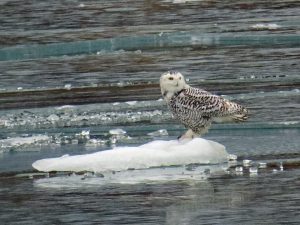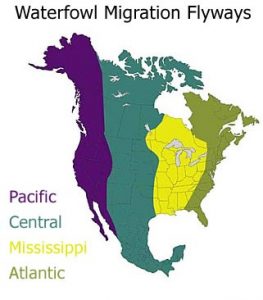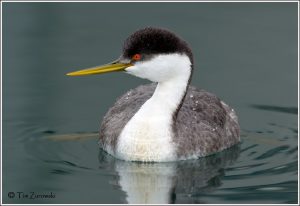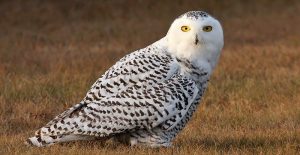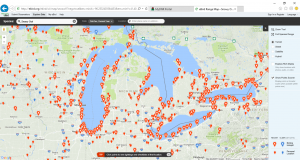Naturalist Notes
February 2018
The temperatures have remained relatively stable, which means solid ice in the lagoon that is perfect for ice fishing. Waterfowl, however, do not share the same enthusiasm for ice cover. They are warmer and closer to their food source when they stay in open water areas during Wisconsin’s winters. The open water area under the bridge is a popular spot for waterfowl to congregate, especially since Lake Michigan is currently at 51% ice cover.
If you look closely at the waterfowl around the park, you will see 4 main species: Goldeneye, Mallard, Greater Scaup and Lesser Scaup (the scaups are also known as Bluebills).

Goldeneye (Bucephala clangula)
Males: Black head with a white spot near the bill; black back with white sides
Female: Brown head with gray back and wings; black bill with yellow at the tip
Both: Bright yellow eyes; white patch on wings
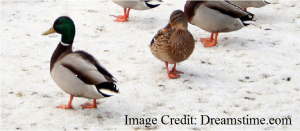
Mallard (Anas platyrhynchos)
Males: Dark, iridescent green head with yellow bill; gray body with black tail
Females: Mottled brown body with orange and brown bill
Both: Blue patch on their wing with a white border

Greater Scaup (Aythya marila)
Males: Black head with green iridescence; dark grey/black tail, grey/white body
Females: Dark brown head; brown body; white base on bill
Both: Rounded head; blue-grey bill with a black tip
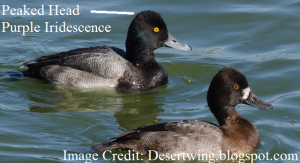
Lesser Scaup (Aytha affinis)
Males: Black head with purple iridescence; dark grey/black tail; grey/white body slightly darker than Greater Scaup
Females: Dark brown head and body with slight mottling; white base on bill
Both: Small peak/tuft on top of head; smaller than Greater Scaups
We’d love to see your photos! Share your photos of the park, or of your catch, with us on our facebook page, or email them to Angela.Vickio@wisconsin.gov. We are getting close to spring, so make sure to check our website or our facebook page often for upcoming events!


